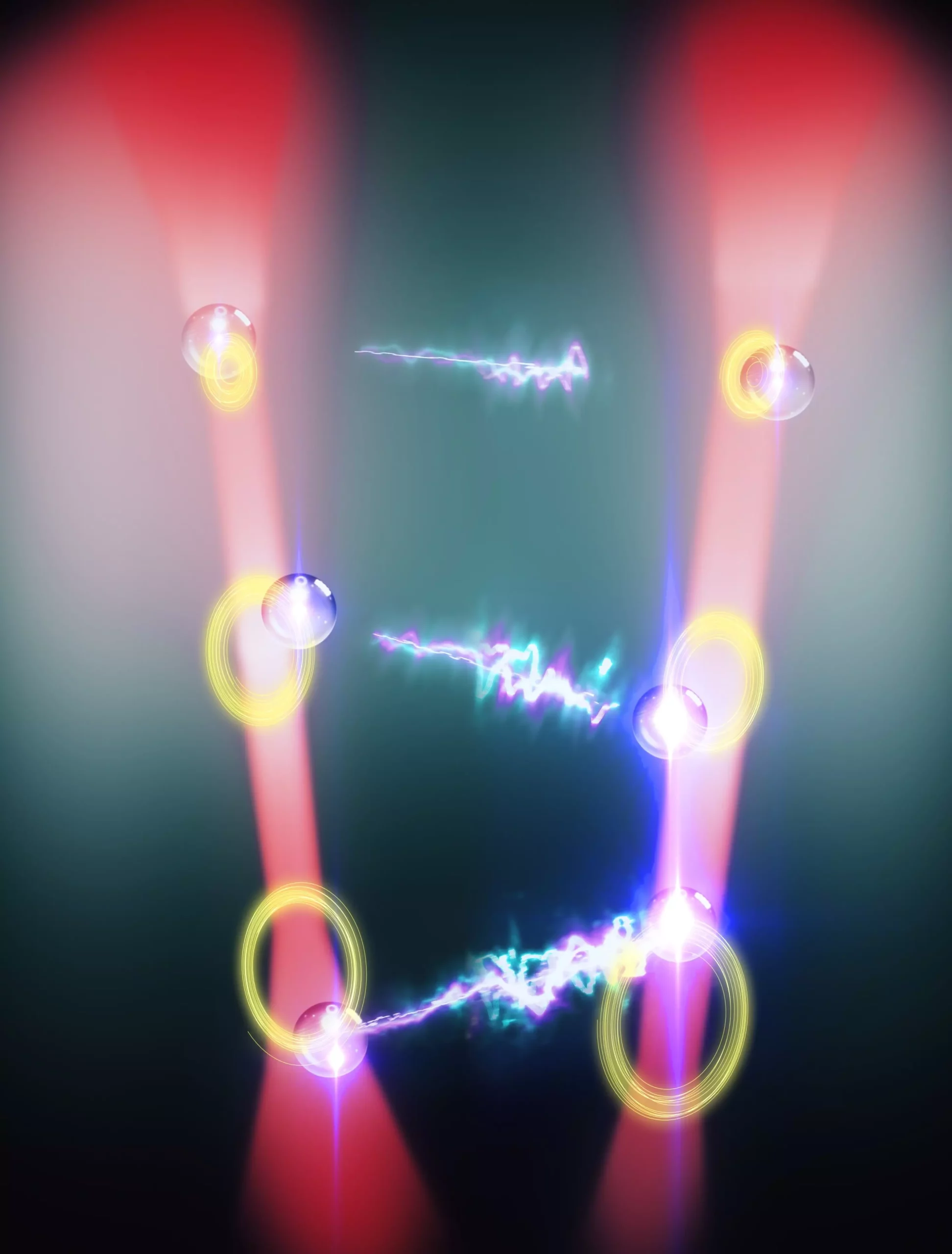In the realm of advanced physics, the understanding and manipulation of small particles have garnered significant interest. Recent research undertaken by a dedicated group at the University of Vienna has made compelling strides in this area through the observation of non-reciprocal dynamics using optically trapped glass nanoparticles. This breakthrough challenges our traditional understanding of interactions between particles, presenting a fascinating glimpse into the complexities of non-Hermitian and non-linear systems.
Theoretical Foundations and Experimental Innovations
At the heart of this study lies the use of optical tweezers—an innovative technique that utilizes laser light to manipulate tiny particles. This concept isn’t new; it reached a pinnacle of recognition when Arthur Ashkin was awarded the Nobel Prize in 2018. However, what sets the recent work apart is its sophisticated integration of non-reciprocal interactions, which diverge from the common understanding of particle interactions governed by symmetry.
Under the guidance of Uroš Delić, a team of researchers developed a groundbreaking tabletop experiment that allowed them to observe how two glass nanoparticles interact as though they were players in a predator-prey scenario. Traditionally, interactions such as gravity or electromagnetism are reciprocal—forces exerted by one particle on another are matched by an equal and opposite force. This study delves into the intriguing arena where this symmetry is broken. For example, in nature, a predator seeks to catch a prey, while the prey attempts to evade. This nuanced understanding of interactions lends itself to new classifications of dynamical systems, revealing the behavior of particles in a non-reciprocal context.
Harnessing Tunable Interactions
The researchers did not simply observe these dynamics; they actively controlled them through meticulous tuning of laser beam phases and the spatial arrangement of the nanoparticles. As Ph.D. researcher Manuel Reisenbauer articulated, programming the physical interactions was akin to coding a video game. The implications of this technological control are extensive. By generating constructive and destructive interference patterns around each particle, the team created a feedback loop that drove the particles to engage in a “chase-runaway” dynamic. This innovative approach has allowed them to explore complex non-linear dynamical systems that were previously difficult to study.
Previous experiments had noted that when nanoparticles were closely spaced, the light from the tweezers could lead to complex interference effects, resulting in non-reciprocal forces. However, this new study elevates those foundational concepts by revealing just how finely particles can be manipulated, allowing researchers to observe emergent behaviors that mimic more elaborate natural dynamics.
Breaking Symmetries: The Role of Anti-Reciprocal Interactions
The core of this research resonates with a significant observation: when applying anti-reciprocal interactions between the nanoparticles, a transformation occurs in their motion—analogous to pendulum swings synchronized in a dance. The study highlights how a small displacement of one particle compels the other into motion, creating a reinforcement effect. This leads to dramatic changes in their oscillations, breaking the symmetry characteristic of traditional interactions.
What draws attention is how the particles amplify their motions under certain conditions. When the interplay between interaction strength and external friction reaches a specific threshold, the result is a continuous swinging motion irrespective of resistance—an undertaking that showcases the rich tapestry of non-linear dynamics at play. The output of their experiment hints at broader applications that reach well beyond the lab’s confines, suggesting promising directions in areas such as force sensing and torques.
Implications and Future Directions
Benjamin Stickler from Ulm University, a key theorist in this collaboration, has emphasized the unique attributes of their system, positioning it as a fertile ground for future exploration of larger ensembles of nanoparticles. The potential to observe more intricate non-reciprocal dynamics is tantalizing. Additionally, merging these findings with quantum mechanics could pave the way for groundbreaking advancements in the study of few-body systems interacting non-reciprocally.
This venture into complex particle dynamics signifies an important shift in how researchers view the physical nature of interactions at the nanoscale. The fusion of optical manipulation technology with innovative theoretical insights serves as a reminder that our understanding of physics remains an evolving field, brimming with possibilities for unprecedented discoveries. Each experiment contributes another brushstroke to the intricate painting of quantum mechanics, optics, and particle physics, inviting future inquiry and inspiring a generation of physicists to reimagine the boundaries of their field.


Leave a Reply